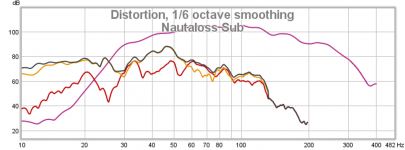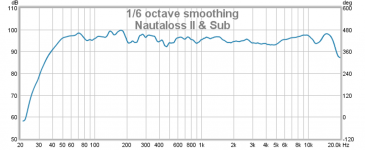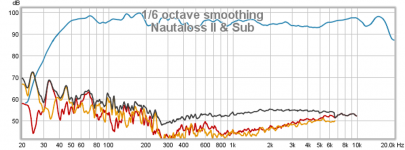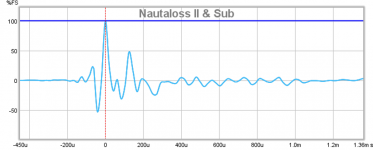Built question: is the internal spiral calculation based on Fibonacci sequence ?
EDIT: ok, just found a matematical paper (2006) for cochlea shape calculation
Cochlea’s Graded Curvature Effect on Low Frequency Waves
EDIT: ok, just found a matematical paper (2006) for cochlea shape calculation
Cochlea’s Graded Curvature Effect on Low Frequency Waves
Last edited:
No, nothing fancy. Just hand drew spiral to approximate length given initial mouth size and overall envelope which determines sealed chamber volume.
Hi forart.eu,
Your link in Post #122 does not want to work for me. Do you have a .pdf (or .txt) for the paper?
Regards,
Your link in Post #122 does not want to work for me. Do you have a .pdf (or .txt) for the paper?
Regards,
Hi forart.eu,
Your link in Post #122 does not want to work for me. Do you have a .pdf (or .txt) for the paper?
Regards,
Original, complete, pubmed article:
The influence of cochlear shape on low-frequency hearing
Very interesting read. I actually called this speaker the Cochlear before going with the Nautaloss name. If you look at the graph legend on the first figure in post 1, you will see "Cochlear". 🙂 When I model it in Akabak I simplify by unrolling it to a straight line but add the effect of inertial resistance of flow through a bend. That is probably equivalent of focusing at the apex as the paper calls.
Sorry, but works for me (you must skip the fu****g ad, of course)...Your link in Post #122 does not want to work for me. Do you have a .pdf (or .txt) for the paper?
@xrk971: have you tried to "reverse" the spiral ?
According to this image should work "better", i believe:

The driver should be in the "Round Window" place.
Another interesting - completely different - test could be to put it in the center of the spiral and use it to emit the sound...
Last edited:
Putting it at the center does indeed work very well as we all know of the Cornu speaker. 🙂. The spiral is an amazingly compact BLH.
Hi forart.eu,
Your link in Post #122 worked for me today, interesting information, but, I have no idea how to apply that to loudspeaker building. 🙂
Thanks,
Your link in Post #122 worked for me today, interesting information, but, I have no idea how to apply that to loudspeaker building. 🙂
Thanks,
Hi forart.eu,
Your link in Post #122 worked for me today, interesting information, but, I have no idea how to apply that to loudspeaker building. 🙂
Thanks,
That short spirals are good for HF and long ones are good for LF? 🙂
XRK:
Those inexpensive speakers you used in the quad Nautaloss spiral sub at parts express are out of stock. What inexpensive sub speakers would you recommend to use instead?
I'm going to be building as soon as parts express ships me the viva drivers 3 Nautaloss dual speakers, for front and center channels. Single Nautaloss speakers for the rear pair.
I also have some extra auto speakers that I may put into Karlsons to use as at work speakers. Which is in this huge building. One pair, made by Kenwood I believe. they are in a storage shed so I do not have them in front of me now a 5X7 coax. and some cheapy 8" rear speakers. Chinese made that came out of a Suzuki Aereo. Those I probably, would never be able to find the specs. In any case dollar store foam board is extremely inexpensive. So if these do not work out, it is not a problem.
Those inexpensive speakers you used in the quad Nautaloss spiral sub at parts express are out of stock. What inexpensive sub speakers would you recommend to use instead?
I'm going to be building as soon as parts express ships me the viva drivers 3 Nautaloss dual speakers, for front and center channels. Single Nautaloss speakers for the rear pair.
I also have some extra auto speakers that I may put into Karlsons to use as at work speakers. Which is in this huge building. One pair, made by Kenwood I believe. they are in a storage shed so I do not have them in front of me now a 5X7 coax. and some cheapy 8" rear speakers. Chinese made that came out of a Suzuki Aereo. Those I probably, would never be able to find the specs. In any case dollar store foam board is extremely inexpensive. So if these do not work out, it is not a problem.
AZDoug,
Those PE 6.5 in woofers are kind of special and tough to find a replacement for $5. Look for something with a high Qts of 0.8 to 1.0 and fs of around 50 Hz and xmax of at least 3mm. You might try MCM. If the Qts is too low, the bass extension wont be deep enough without EQ'ing. If you have active EQ and biamp, then it is fine to use lower Qts drivers with lots of xmax.
Maybe this might work?
http://www.mcmelectronics.com/product/55-1185?utm_source=Criteo&utm_medium=Retargeting&utm_term=55-1185&utm_campaign=criteo+retargeting&CA_6C15C=1318639503
Those PE 6.5 in woofers are kind of special and tough to find a replacement for $5. Look for something with a high Qts of 0.8 to 1.0 and fs of around 50 Hz and xmax of at least 3mm. You might try MCM. If the Qts is too low, the bass extension wont be deep enough without EQ'ing. If you have active EQ and biamp, then it is fine to use lower Qts drivers with lots of xmax.
Maybe this might work?
http://www.mcmelectronics.com/product/55-1185?utm_source=Criteo&utm_medium=Retargeting&utm_term=55-1185&utm_campaign=criteo+retargeting&CA_6C15C=1318639503
Last edited:
Hi xrk971,
That looks like a nice one. I used 55-1170 years ago, and from my notes the measured T/S parameters had nothing to do w/ the advertised claims, but it worked very nicely in a small isobaric arrangement we used sealed in a pickup truck.
For what it's worth:
55-1170 measured/calculated T/S parameters:
Fs=46.3
Vas=0.84ft^3/23.79L
Qms=3.03
Qes=1.35
Qts=0.9339
Cond dia.=5.63"/14.3cm
I'd be inclined to try their least expensive offering the 55-2970 @ $5.39ea. Qty.4+.
Regards,
That looks like a nice one. I used 55-1170 years ago, and from my notes the measured T/S parameters had nothing to do w/ the advertised claims, but it worked very nicely in a small isobaric arrangement we used sealed in a pickup truck.
For what it's worth:
55-1170 measured/calculated T/S parameters:
Fs=46.3
Vas=0.84ft^3/23.79L
Qms=3.03
Qes=1.35
Qts=0.9339
Cond dia.=5.63"/14.3cm
I'd be inclined to try their least expensive offering the 55-2970 @ $5.39ea. Qty.4+.
Regards,
Oliver,
The TS parameters for the driver you describe 55-1170 is perfect for this application. Qts of about 1 and fs of 46 Hz.
X
The TS parameters for the driver you describe 55-1170 is perfect for this application. Qts of about 1 and fs of 46 Hz.
X
Hi X,
Let's just hope they are still in that range. But, it's hard to beat the price. 🙂
Regards,
Let's just hope they are still in that range. But, it's hard to beat the price. 🙂
Regards,
...but Cornu-type is *not* cochlear !Putting it at the center does indeed work very well as we all know of the Cornu speaker. 🙂. The spiral is an amazingly compact BLH.
Anyway, i believe that the 1st - and easiest - test should be the reversing of the spiral; it could be also interesting to tilt drivers a bit...
...but Cornu-type is *not* cochlear !
Anyway, i believe that the 1st - and easiest - test should be the reversing of the spiral; it could be also interesting to tilt drivers a bit...
Regarding exact mathematical shape of spiral: from a standpoint of a TL, the differences between a linear expansion, a clothoid (cornu), a cochlear, a Fibonacci, an exponential, really don't matter that much in the simulations. For the final profile in a horn expansion they may matter a lot more but all can be approximated with segments of linear expansion if small enough segments used (the fundamental idea of infintessimal calculus).
I guess I don't understand the purpose of why you want to reverse the spiral. Are you saying stick with a sealed TL but with driver on small end and closed end is large 'mouth' area even though mouth is closed?
Or are you saying to reverse it and open mouth to make a BLH, or to put driver in sealed back chamber with expansion to open mouth like a bass horn?
Lots of things you can do here, having push-pull multiple smaller drivers will reduce distortion though in any case.
Last edited:
miniDSP XO with Nautaloss Sub
I finally got a minDSP 2x4 and setup a XO to run the sub. I set it up for -48dB/oct high pass at 35 Hz and 200 Hz low pass. I also was able to set the delay between the sub and tops - the sound is a lot more coherent now. The illusion of the 40 Hz bass coming from the tops high passed at 150 Hz is pretty cool. This is measured with mic 1 meter away with the sub corner loaded.
I finally got a minDSP 2x4 and setup a XO to run the sub. I set it up for -48dB/oct high pass at 35 Hz and 200 Hz low pass. I also was able to set the delay between the sub and tops - the sound is a lot more coherent now. The illusion of the 40 Hz bass coming from the tops high passed at 150 Hz is pretty cool. This is measured with mic 1 meter away with the sub corner loaded.
Attachments
Final In-Room Response with Nautaloss II & Subs - Reference Quality!
I used the miniDSP to adjust the EQ to smooth the in-room response at the listening position (ear height at seated position) near the middle of the room. I also had a couple of the 47 in tall MLTL's that I built using the same 6.5 in polycone drivers as the Nautaloss sub employed as subs. I aimed them into the left corner of the room while the Nautaloss sub is aimed at the right corner of the room. The amp volume was set at typical listening level (11 o'clock) but the test is performed with the volume from the source at -8 dB (full scale) and here is what I came up with. Recall that the amp for subs was Yamaha RX360 class A/B, amp for tops is home-built TPA3116D2.
SPL vs Freq shows that at an average SPL of 96 dB (about 9 dB louder than how I actually listen to music), the -3 dB response range is 42 Hz to 18 kHz.:
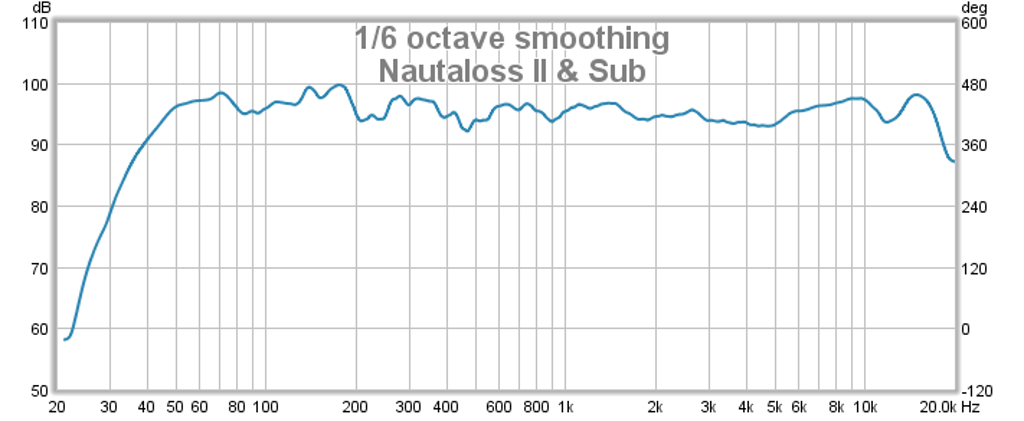
Distortion vs Freq is excellent now showing between -30 dB to -40 dB from 40 Hz on up. Note that at actual listening levels of 87 dB, the THD will be even less and will match the -50 dB figure I previously obtained:
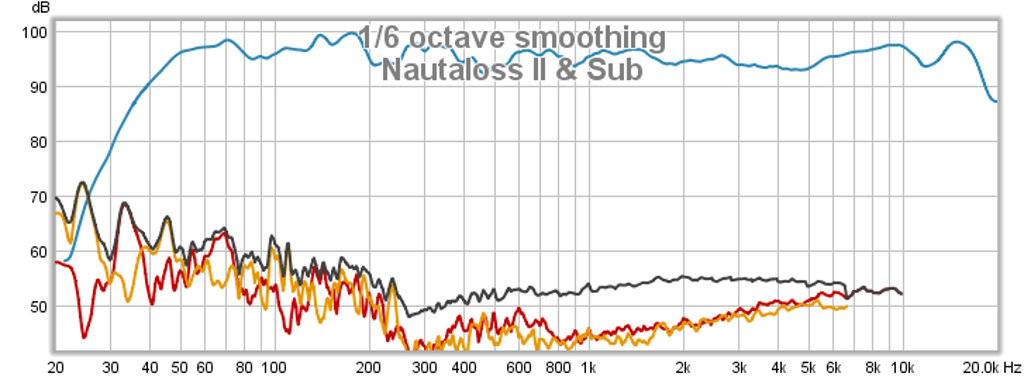
Impulse Response shows a pretty tight response with a single ring that subsides after 200 microseconds:
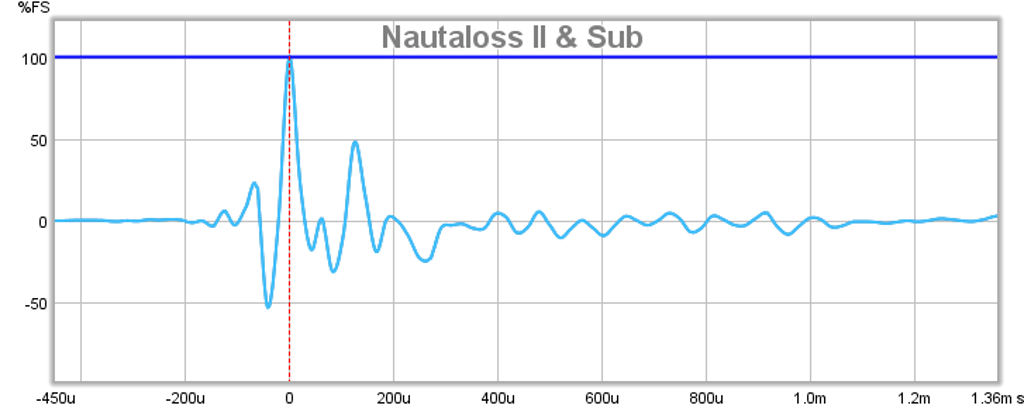
All in all, a very nice performance for any speaker, I won't even qualify it with budget drivers or foam core construction. What is interesting is after all this, what matters is how does it sound? Well, I was shocked and blown away is all I can say. Once you have a set of speakers dialed in with a response curve that is this flat and extends pretty much over the normal range of music program and you put some music on, you are struck by how great it sounds. I had a big grin listening to it as it resembled what I would have heard using my studio monitor headphones but without the feeling of having the sound image between my ears. Instead, a real sound stage with depth and spatial extent to the sides, back, and a sense of the sound textures that were meant to be heard by the sound engineer. The articulation in the bass is very nice and it renders piano, drums, and other percussion instruments with realism. The smoothness of the vocal range is just amazing. I am really loving the sound and looking forward to listening to my collection all over again 😀
I used the miniDSP to adjust the EQ to smooth the in-room response at the listening position (ear height at seated position) near the middle of the room. I also had a couple of the 47 in tall MLTL's that I built using the same 6.5 in polycone drivers as the Nautaloss sub employed as subs. I aimed them into the left corner of the room while the Nautaloss sub is aimed at the right corner of the room. The amp volume was set at typical listening level (11 o'clock) but the test is performed with the volume from the source at -8 dB (full scale) and here is what I came up with. Recall that the amp for subs was Yamaha RX360 class A/B, amp for tops is home-built TPA3116D2.
SPL vs Freq shows that at an average SPL of 96 dB (about 9 dB louder than how I actually listen to music), the -3 dB response range is 42 Hz to 18 kHz.:

Distortion vs Freq is excellent now showing between -30 dB to -40 dB from 40 Hz on up. Note that at actual listening levels of 87 dB, the THD will be even less and will match the -50 dB figure I previously obtained:

Impulse Response shows a pretty tight response with a single ring that subsides after 200 microseconds:

All in all, a very nice performance for any speaker, I won't even qualify it with budget drivers or foam core construction. What is interesting is after all this, what matters is how does it sound? Well, I was shocked and blown away is all I can say. Once you have a set of speakers dialed in with a response curve that is this flat and extends pretty much over the normal range of music program and you put some music on, you are struck by how great it sounds. I had a big grin listening to it as it resembled what I would have heard using my studio monitor headphones but without the feeling of having the sound image between my ears. Instead, a real sound stage with depth and spatial extent to the sides, back, and a sense of the sound textures that were meant to be heard by the sound engineer. The articulation in the bass is very nice and it renders piano, drums, and other percussion instruments with realism. The smoothness of the vocal range is just amazing. I am really loving the sound and looking forward to listening to my collection all over again 😀
Attachments
Last edited:
- Home
- Loudspeakers
- Full Range
- The Nautaloss Ref Monitor

